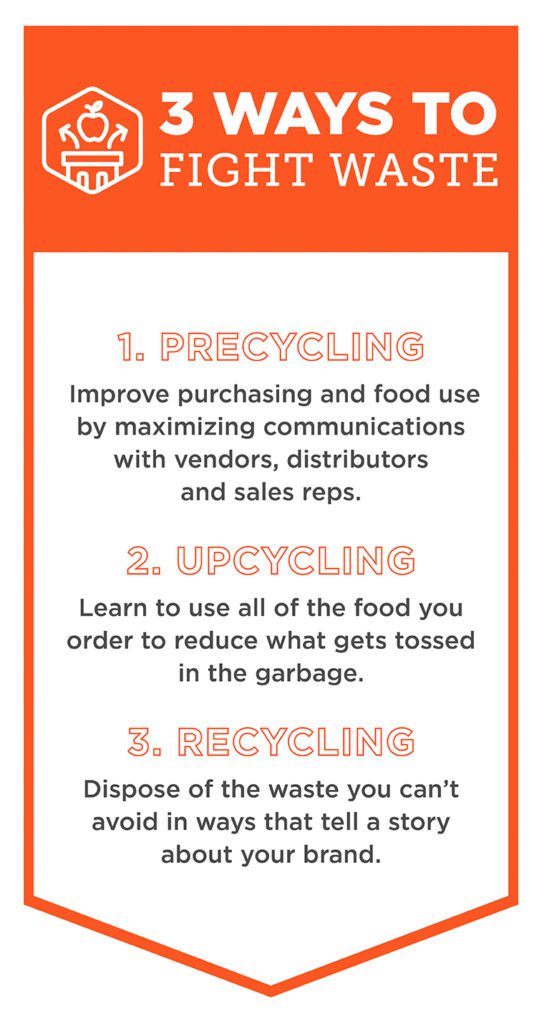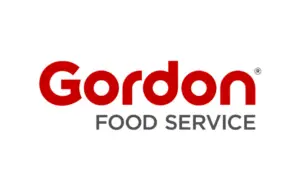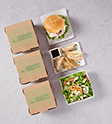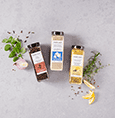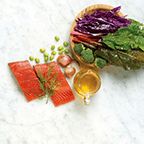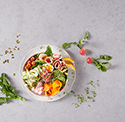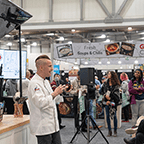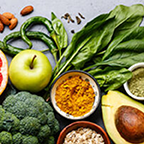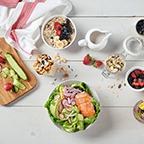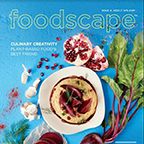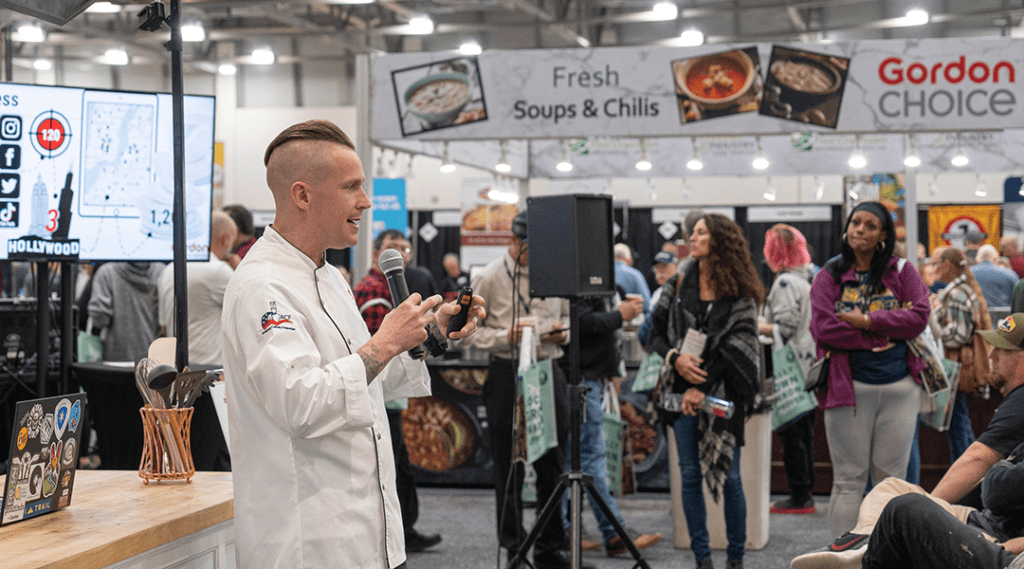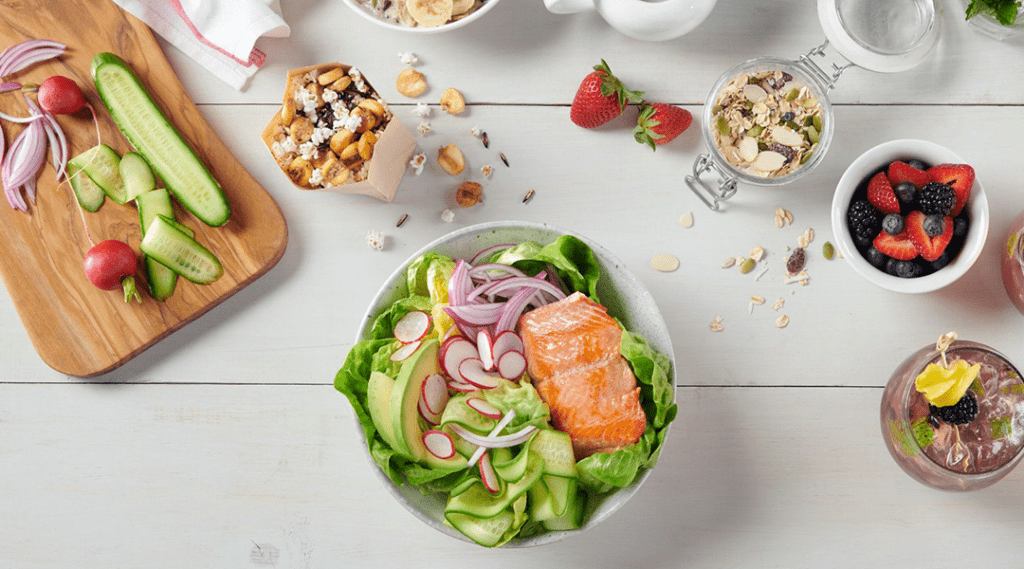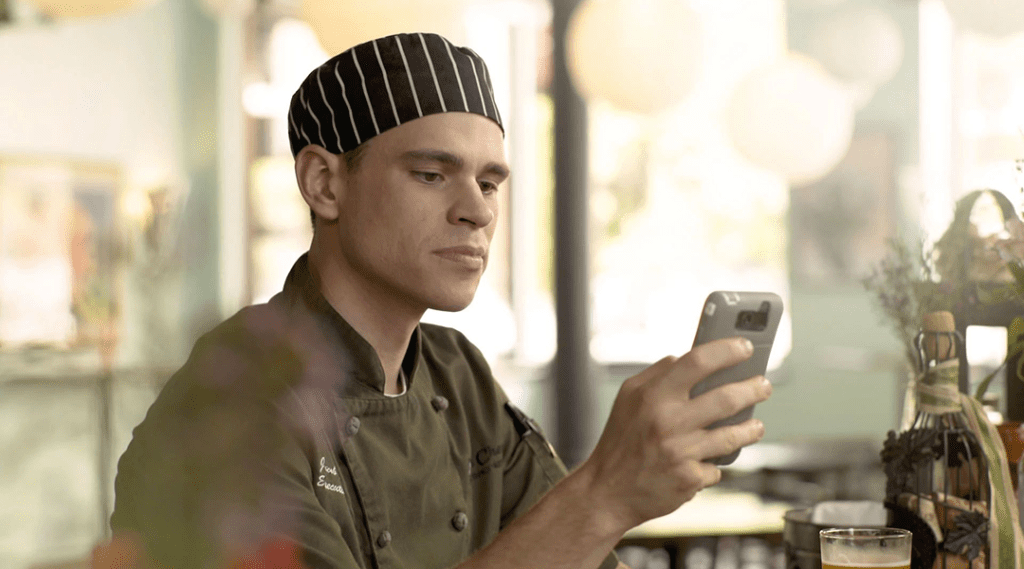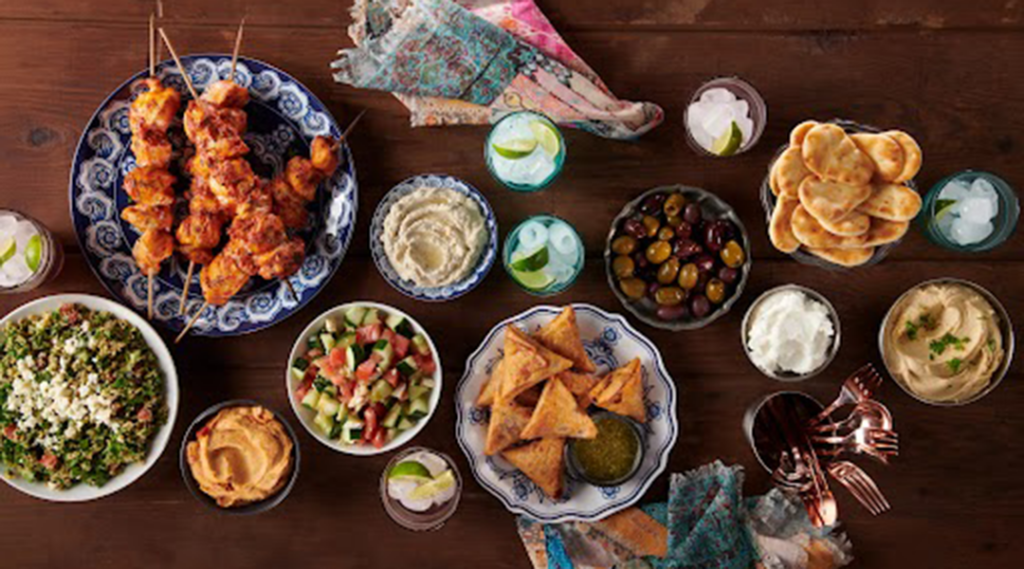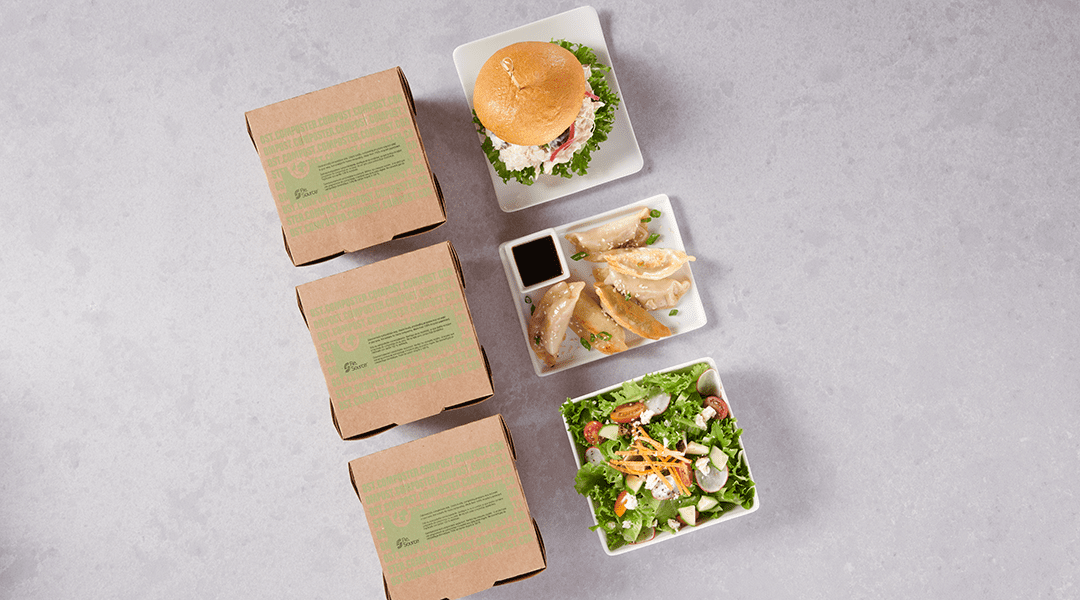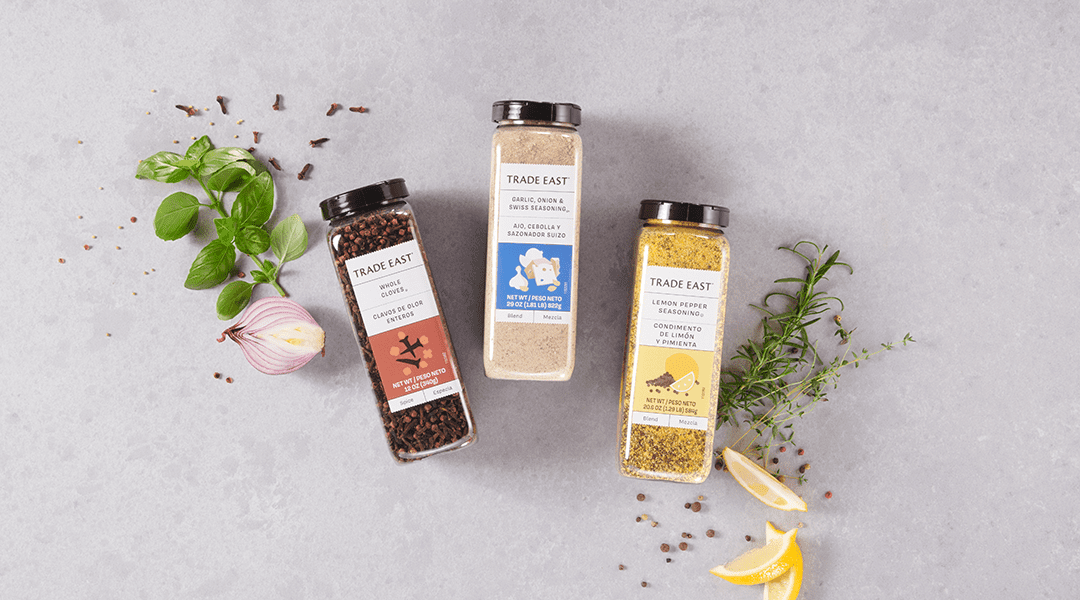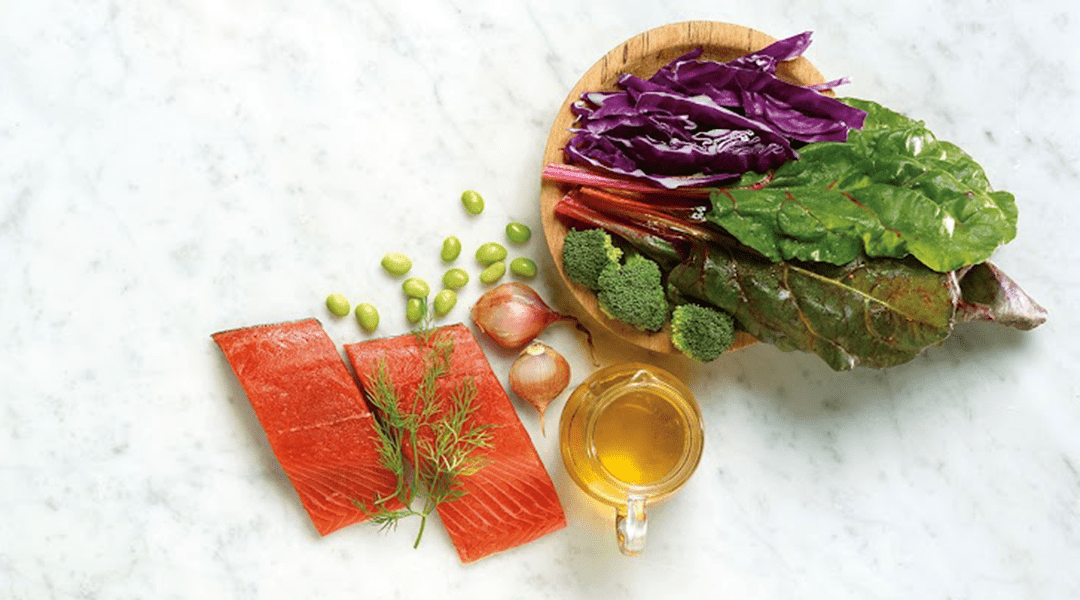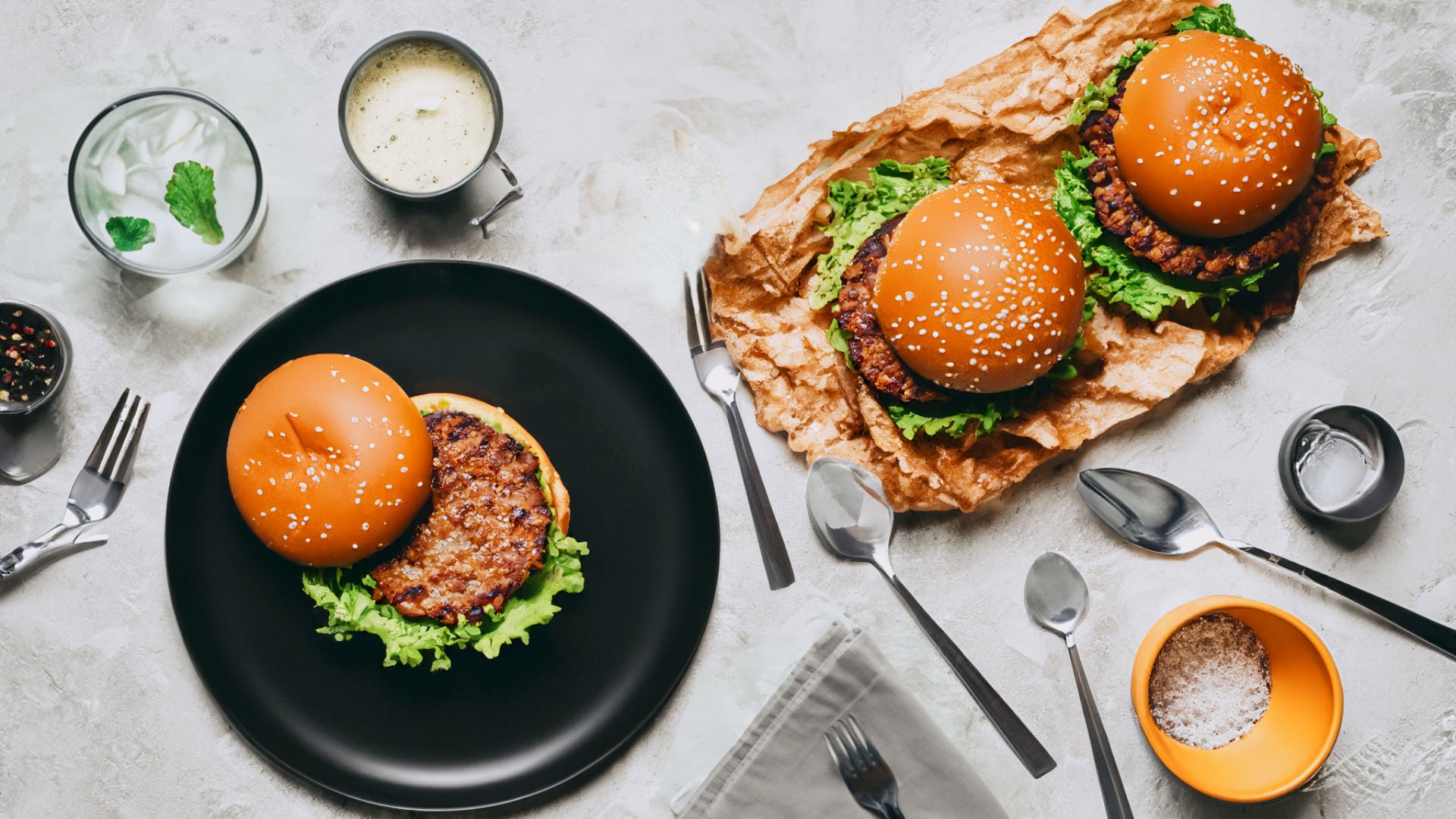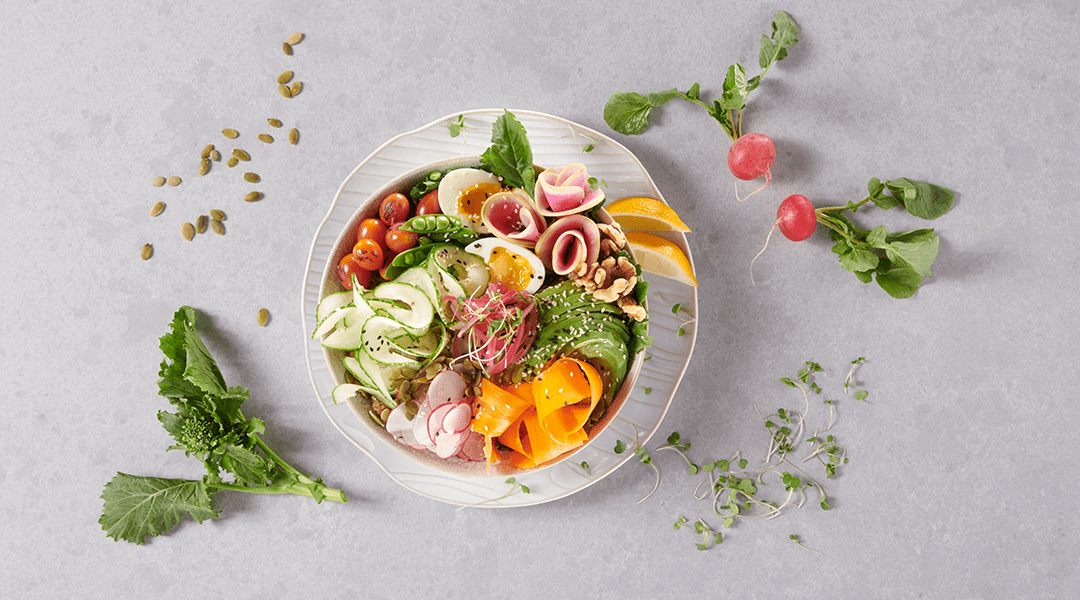After heaving six heavy trash bags into the bin, it’s time to total up the day’s receipts. The surprise that awaits is data showing a chunk of your daily profit is in the food waste headed to the landfill.
The dumpster behind your restaurant doesn’t have to eat your money. Slicing expenses may be as easy as trimming meats and vegetables more carefully and consistently, according to Gordon Food Service® Culinary Specialist Dan Gervasi.
Agreeing is General Mills Chef Jessie Kordosky. “A lot of money goes into your food. It’s too valuable to throw away,” she said.
Both chefs explained how the industry is embracing three areas for waste reduction: precycling, upcycling and recycling.
What is precycling?
Precycling is thinking ahead. It includes rethinking the menu, standardizing recipes, developing a strong relationship with your food distributor, improving ordering and practicing better inventory management.
“Precycling is a newer concept to people,” Kordosky said. “What I like is that you think about things prior to menuing them … if we bring in these types of ingredients, how do we utilize as much as possible?”
By taking regular inventory and planning exactly how food purchases will be used, operators minimize overordering and maximize each ingredient.
“You have to think like a pizzeria. The same dough gets used in pizza pies, garlic knots, calzones and stromboli,” Gervasi said. Another example: “If you have nachos on the menu, purée the sour cream, lime juice and cilantro into a crema for other menu applications.”
Training and tools also prevent food waste. With high turnover and limited labor, teaching your team food-prep skills pays off. When your team trims vegetables or proteins consistently, you control plate costs better.
Portioning also is critical. “Scoops, spoodles and ladles need to be used consistently or you can easily turn your 36-serving hotel pan into 24 servings,” Kordosky said. The same is true for cutting cakes or pies, she notes.
The art of upcycling
Proper training empowers your staff. It’s a nose-to-tail, root-to-stem mindset called upcycling. It happens when your team notices waste alternatives.
Instead of ending up in the trash, onion peels go into a broth or stock. The same with bones. In addition, the fat from meat trimmings can be rendered into an oil for seasoning vegetables.
“It’s really about getting creative with things that may have normally been thrown away,” Kordosky said. She champions a “Stales to Sales” concept, using items from yesterday’s bakery case. Day-old cinnamon rolls soak up custard beautifully and become her Thai Tea Lime Swirl French Toast Bake recipe.
She notes that the more chefs think about versatility, the more it reduces waste. For example, biscuit dough can be fried into biscuit-bite appetizers or made into waffles, sandwich carriers, flatbreads or even shortcake desserts.
Make recycling pay off
Zero waste is impossible. From egg shells to packaging to that fish with ice crystals in the freezer, trash happens. That’s where recycling comes in.
Instead of viewing it as waste, make it an opportunity—a feel-good story to share through marketing and social media.
Overproduction or extra purchases can be donated to food shelters or food banks through organizations such as MealConnect. Food scraps can be turned into compost. Lots of packaging can be recycled.
“A lot of organizations will pick up food, and a lot of composting facilities provide bins you can put in your kitchen,” Gervasi said. “Your waste can help people and contribute to the overall wellness of the environment, and who doesn’t want to send that message?”

